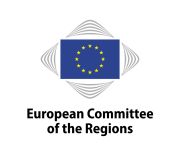
This workshop will seek to define what cross-border living areas are, as the precise geographical delimitation of these areas is yet to be clarified. The workshop plans to approach this theme from three different and, at the same time, complementary angles: the vision of European and cross-border institutions (MOT, CdR), the vision of organised civil society (CESER Grand Est/CESGR), and the challenges of cross-border public services at EGTC level.
- Territorial | Local and regional | INTERREG | EU/ European | Governance and Public administration | Cohesion
- Code: 11WS23397
- Jacques Delors building, JDE 51
Practical information
- When
-
Wed 11/10/2023, 16:30 - 18:00 CET
- Where
- Jacques Delors building, JDE 51
- Type of partnership
- NONE
- Format
- Workshop
- Theme
-
Breaking barriers to cross-border cooperation
- Languages
- English, French
- Websites
-
http://www.eurodistrict-pamina.eu
http://www.cor.europa.eu
- Social media
-
Eurodistrict PAMINA
@EurodistrictPAMINA
Partner

Documents
Reporting
Session summary
Benefiting from the elimination of physical borders, close cross-border ties have developed in many places in the European Union. Areas with a high degree of cross-border integration have thus naturally formed, overcoming cultural and linguistic differences.
In 2020, the public health crisis triggered by COVID-19 suddenly and completely shook the status quo, with far-reaching consequences for the daily lives of the inhabitants of these areas. The existence of cross-border living spaces thus became a fact obvious to all.
However, even though one-third of the inhabitants of the European Union live near a border, these geographical areas and their specificities are still not officially recognised as such, and their inhabitants still face obstacles that their fellow citizens who do not live near a border do not.
This workshop looked to define what cross-border living areas are, as the precise geographical delimitation of these areas is yet to be clarified. The participants had a chance to hear interesting examples from the French-German, Belgian-French and Austrian-Italian border and experiences and plans from the European Committee of the Regions and the Mission Operationelle Transfrontalière.
Quotes
-
With the health crisis, the Member States have realised that cross-border living areas are the forerunners of new cross-border governance systems that are closer to people's lives.



